Cutty Sark
1 October 2006
With the news that the Cutty Sark is to close to visitors at the end of October
for a major refurbishment project, it seemed a good time to visit while I could.
I decided to travel there by boat down the Thames.
Post visit note: with the serious fire on 21 May 2007, it was with hindsight
even more worthwhile to see the ship today.
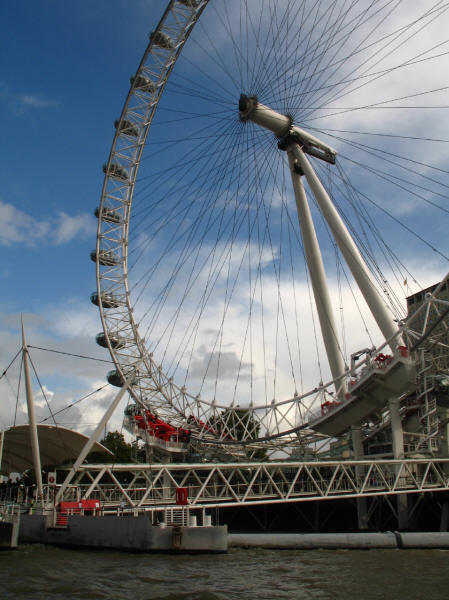
After boarding a river ferry at Embankment Pier, we pop across the river to
Waterloo Pier by the London Eye

From that point, looking across the Thames to the Houses of Parliament, St
Stephen's Tower and Portcullis House
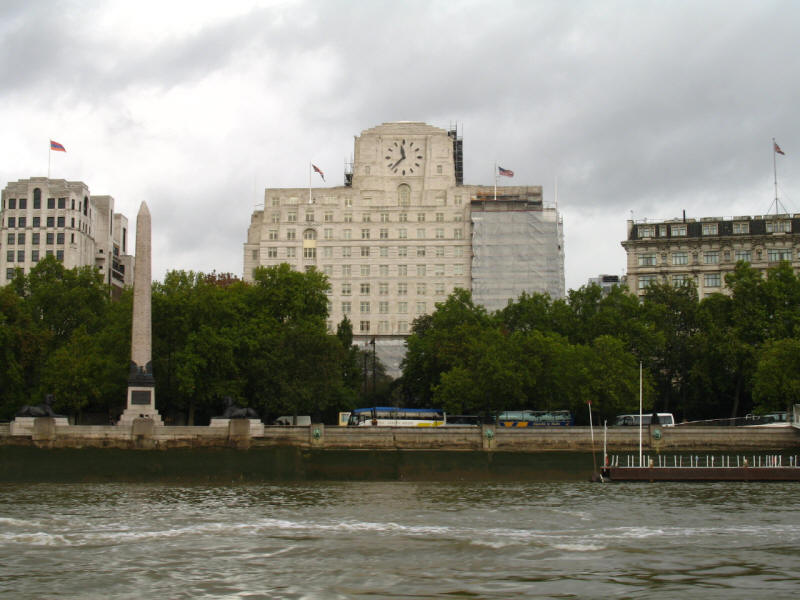
Moving downstream at last, we pass Cleopatra's Needle and the Shellmex building.
The Needle dates from around 1450BC and was presented to the UK in 1819 by the
viceroy of Egypt to commemorate the victories of Lord Nelson at the Battle of
the Nile and Sir Ralph Abercromby at the Battle of Alexandria in 1801. It has
nothing to do with the famous Cleopatra: the vessel constructed around the
pillar to bring it from Alexandria to London was named Cleopatra.
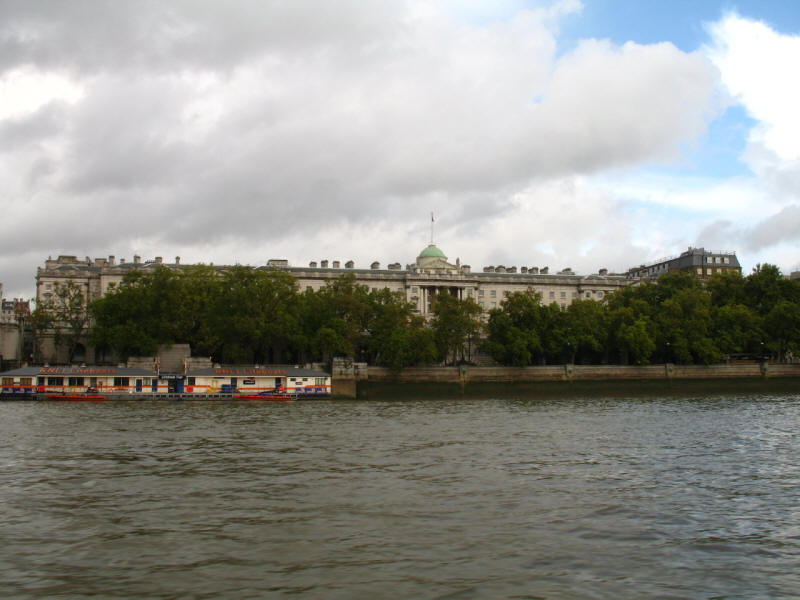
Somerset House, currently occupied by HM Customs & Revenue.
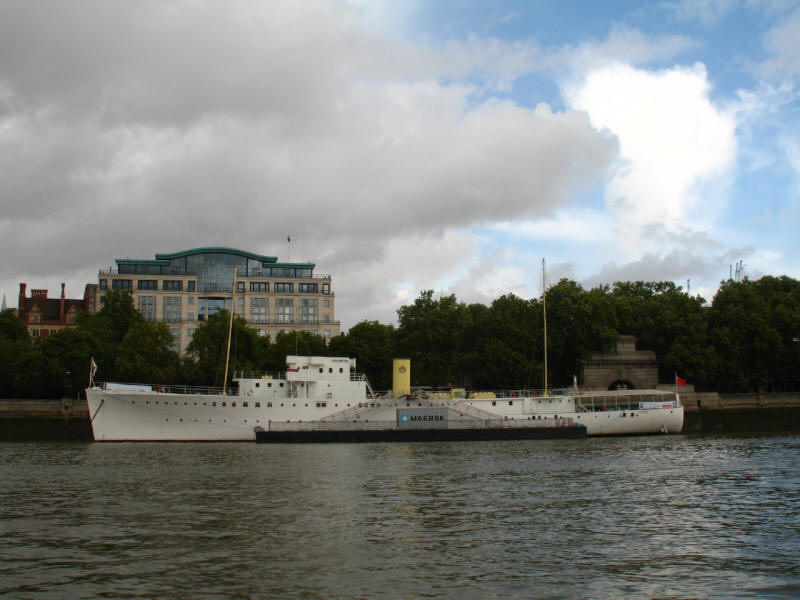
HQS Wellington - a Grimsby class sloop built in 1934, now serving as the
headquarters of the Honourable Company of Master Mariners.
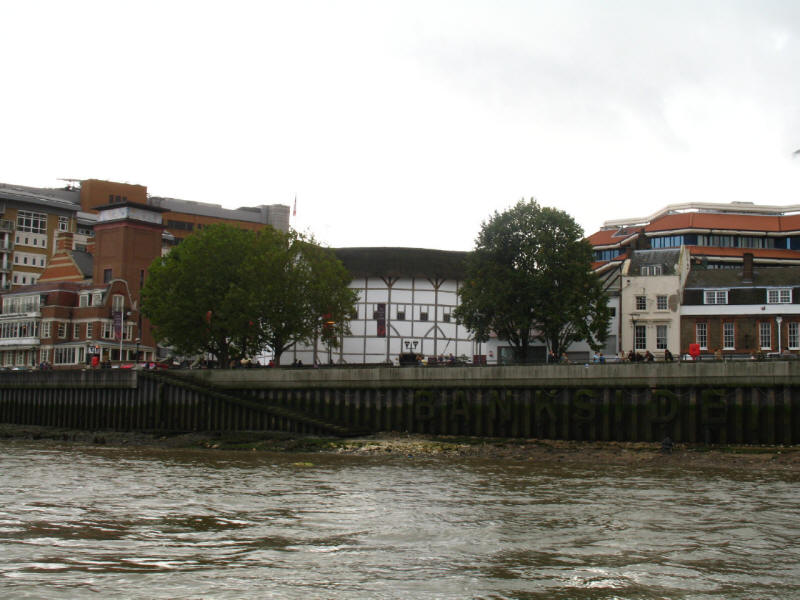
Bankside and Shakespeare's Globe Theatre, a modern replica sited 200 metres from
the original, and the first thatched-roof building in London since the Great
Fire of 1666.

HMS Belfast from the pier near the
Tower. Launched in 1938, the Town-class light cruiser of the Royal Navy served
in World War II and the Korean War. She was retired from active service in 1965,
saved for the nation in 1971 and towed to this berth at Symon's Wharf in the Pool of London and opened
to the public on Trafalgar Day that same year. She is now a museum in the care
of the Imperial War
Museum.
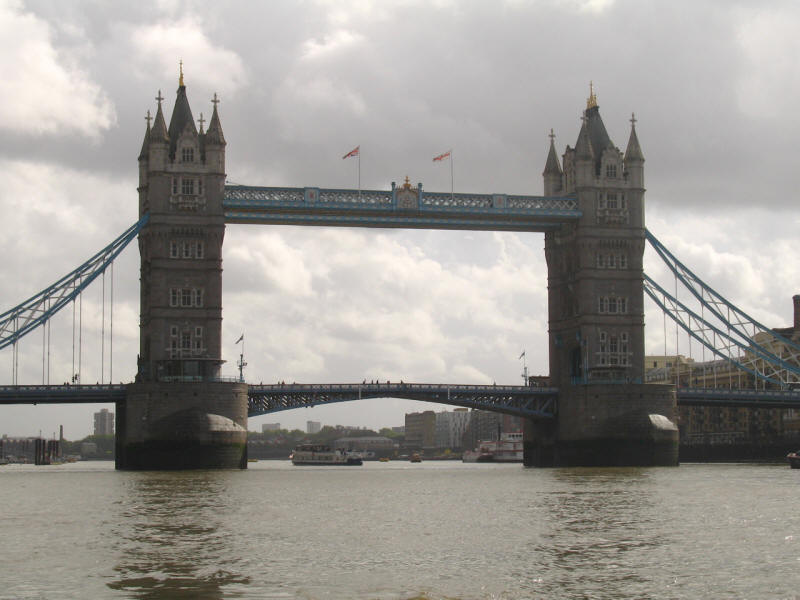
Tower Bridge as we wait at the pier
by the Tower of London. The bridge was completed in 1894, and for almost 100
years was the easternmost bridge across the Thames.
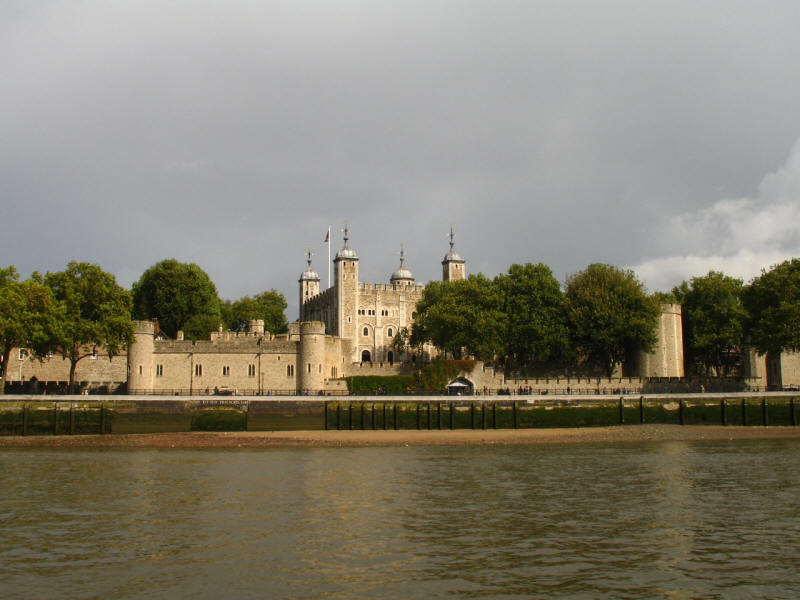
The Tower of London, with the White Tower centre, and the Traitors' Gate left.
The Tower was founded in 1078 by William the Conqueror. It makes for a
fascinating if expensive visit.
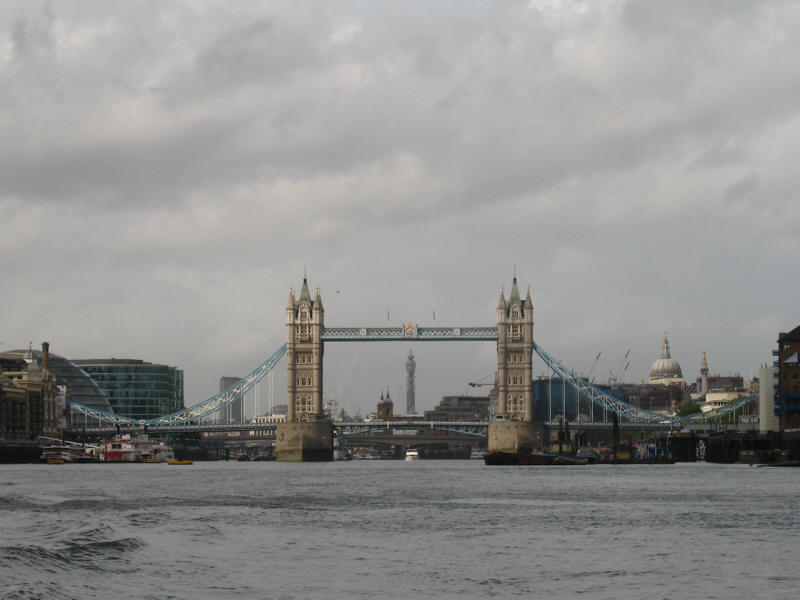
At last making good progress down the river, we leave Tower Bridge behind, with
the BT Tower appearing in the centre of the bridge, and the dome of St Paul's
Cathedral on the right and the dome of City Hall on the left.
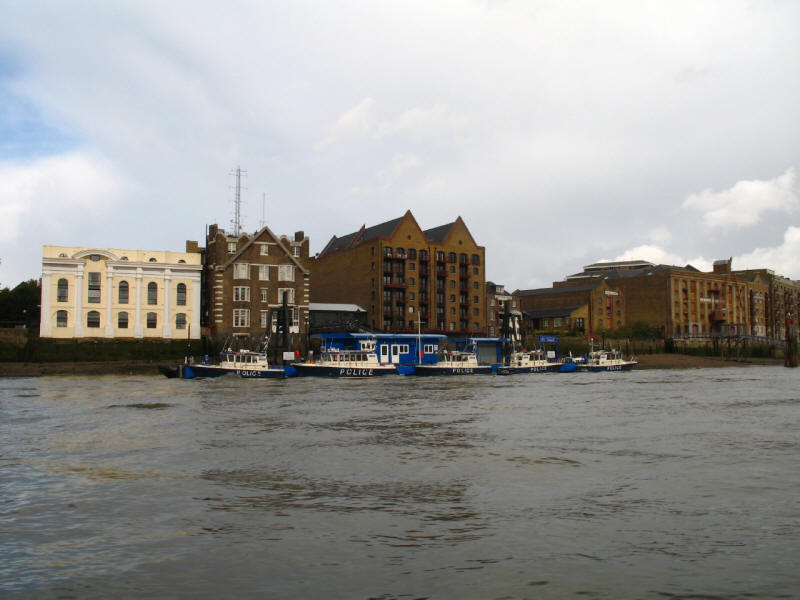
We pass the river boats of the Metropolitan Police
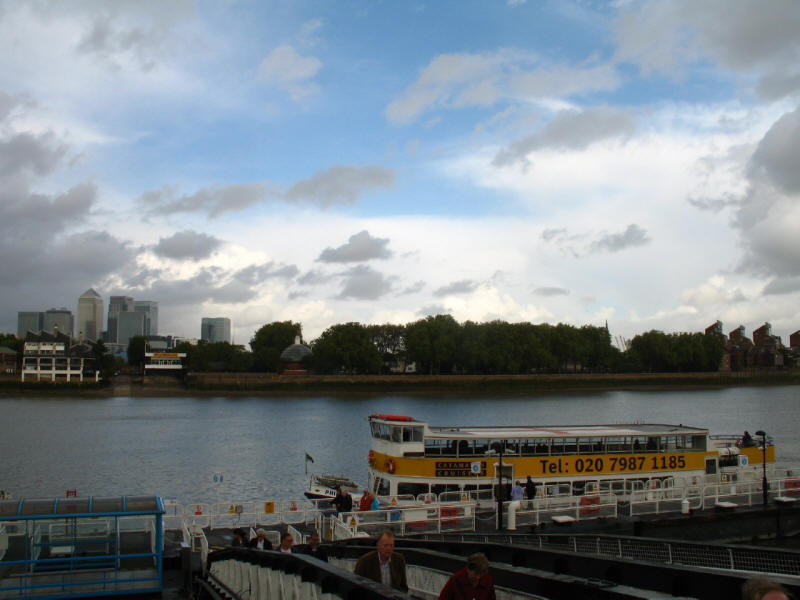
Arriving at Greenwich Wharf, we leave our boat Pridela behind, looking
back across the river to the skyscrapers of Docklands

The huge tea-clipper Cutty Sark immediately faces us as we emerge from
the pier buildings. She weighs 936 tonnes and is 65 metres long, 11 metres wide,
and has a draft of 6.4 metres.
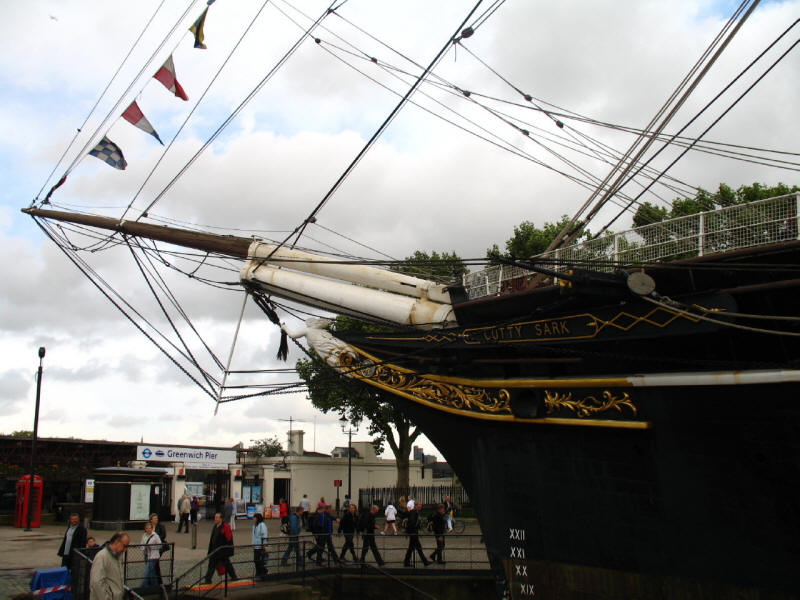
Cutty Sark was one of the last sailing clippers to be built, and the last
to survive.
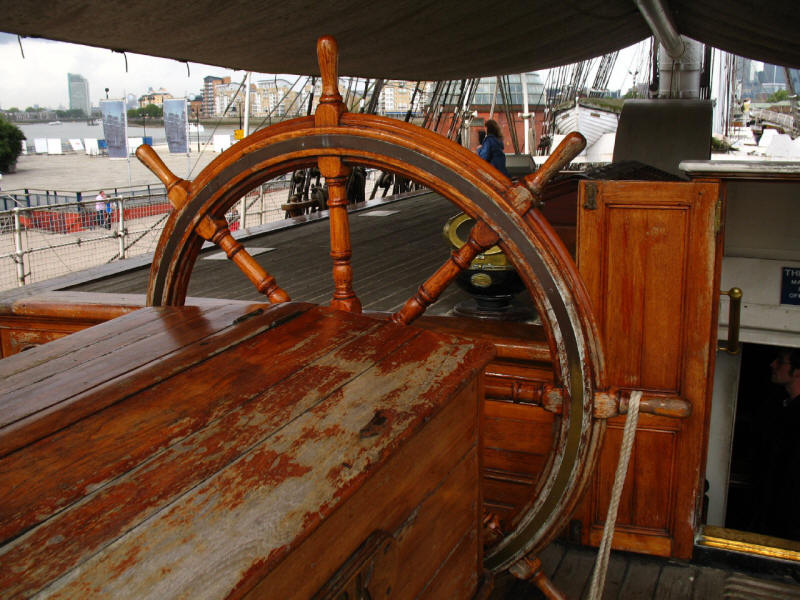
The ship is named after the shirt worn by a witch in the poem Tam o'Shanter by
Robbie Burns. Built in 1869 in Dumbarton, she was built to bring the new season
tea back from China as fast as possible to command the best prices in London.
Although fast, she was beaten by her great rival, the Thermopylae.
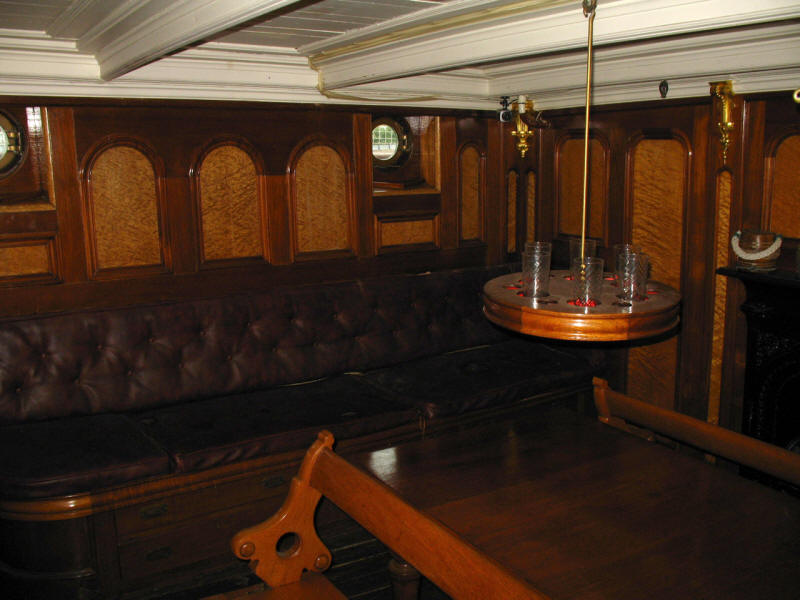
The captain's salon. Eventually the sailing ships were displaced by steamships
and the opening of the Suez Canal.
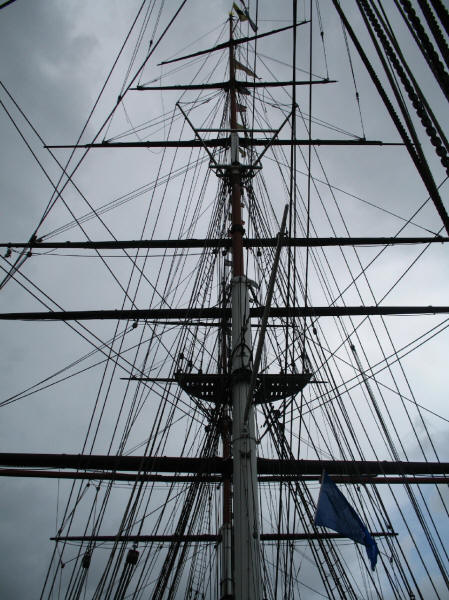
The Cutty Sark then turned to the Australian wool trade, where she was
more successful, recording times of only 67 days from Australia to England.
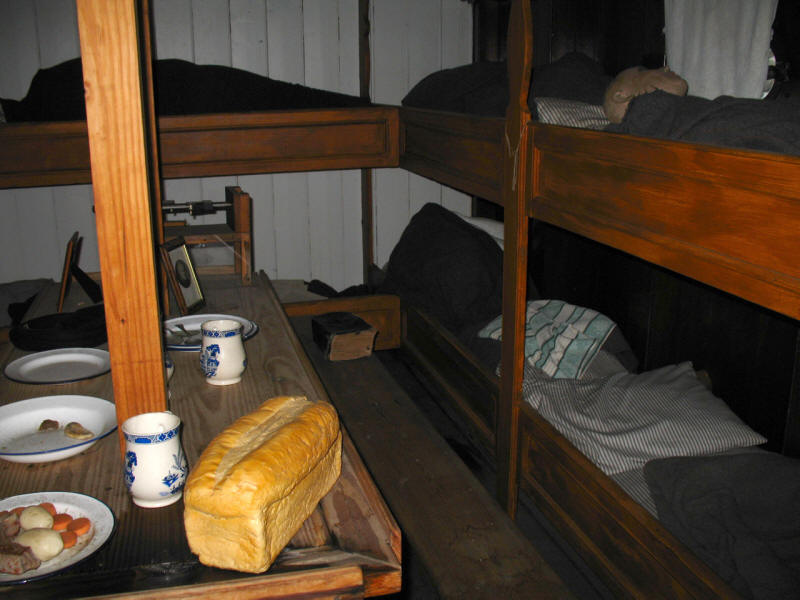
The sleeping accommodation for the small crew was surprisingly spacious - far
more spacious than the more modern HMS Belfast.
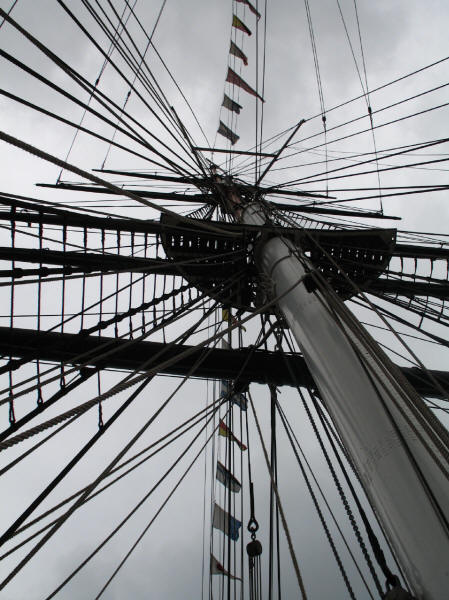
It's a long way up!
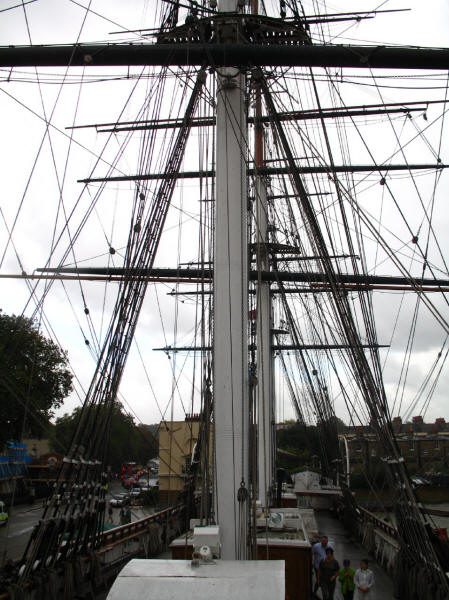
Looking back from the bow

Cutty Sark was renamed Ferreira in 1896 when she was sold to a
Portuguese firm of that name, and after being dismasted off the Cape of Good
Hope was rerigged and renamed Maria del Amparo.
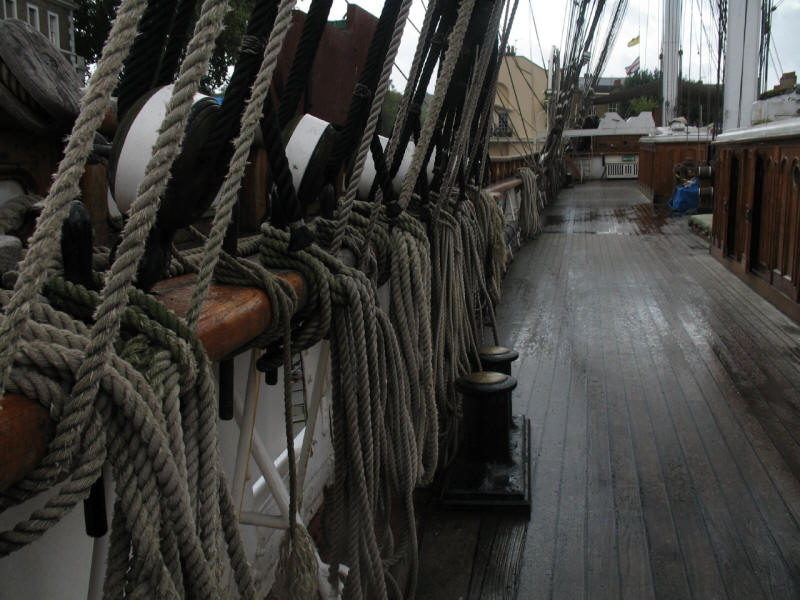
In 1922, she was bought by Captain Wilfred Dowman who restored her to her
original appearance and used her as a stationary training ship. In 1954 she was
put in this dry dock in Greenwich.
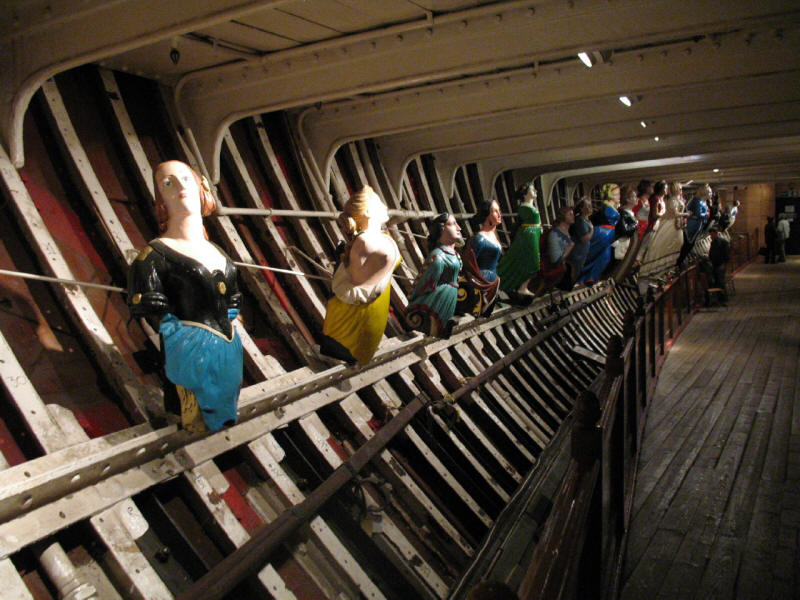
In the cargo hold, a large number of figureheads from other boats.
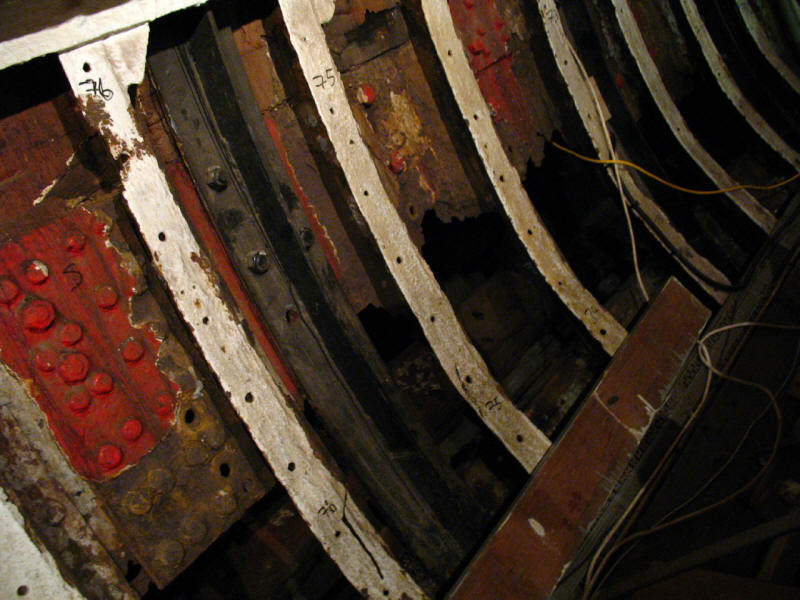
The ship has deteriorated considerably - this is the iron hull, with huge gaps
through which the stone of the dry dock is visible.
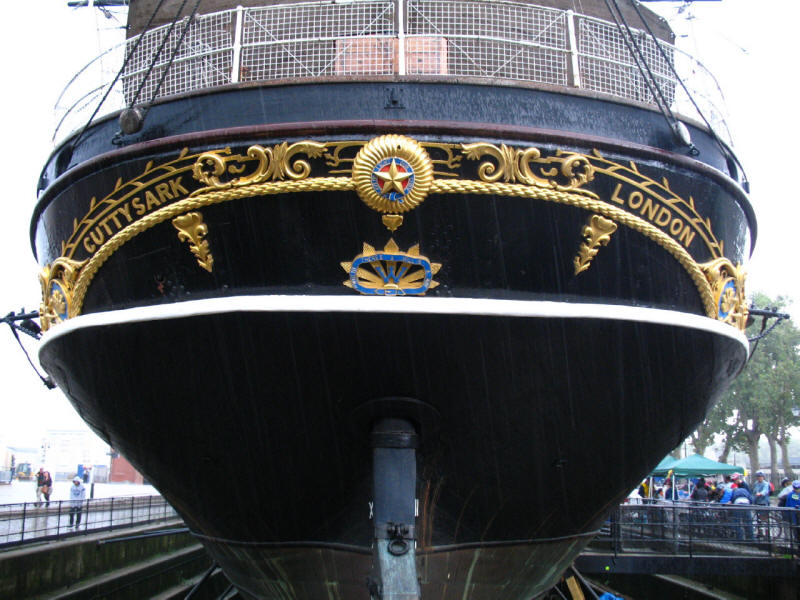
A major conservation project gets underway next month, and will last until 2008,
extensively renovating the ship and making many other changes and improvements.
Another visit in three years' time seems to be called for.
With a very intense thunderstorm pouring vast quantities of water on me by this
point, and lightning all around, it was time for a quick trip to the Docklands
Light Railway and the trip home.
An enjoyable visit, but one which showed both the poor state that parts of the
boat are in, and the scope for improving the visitor experience. Lets hope their
imaginative plans are an improvement.
|
























